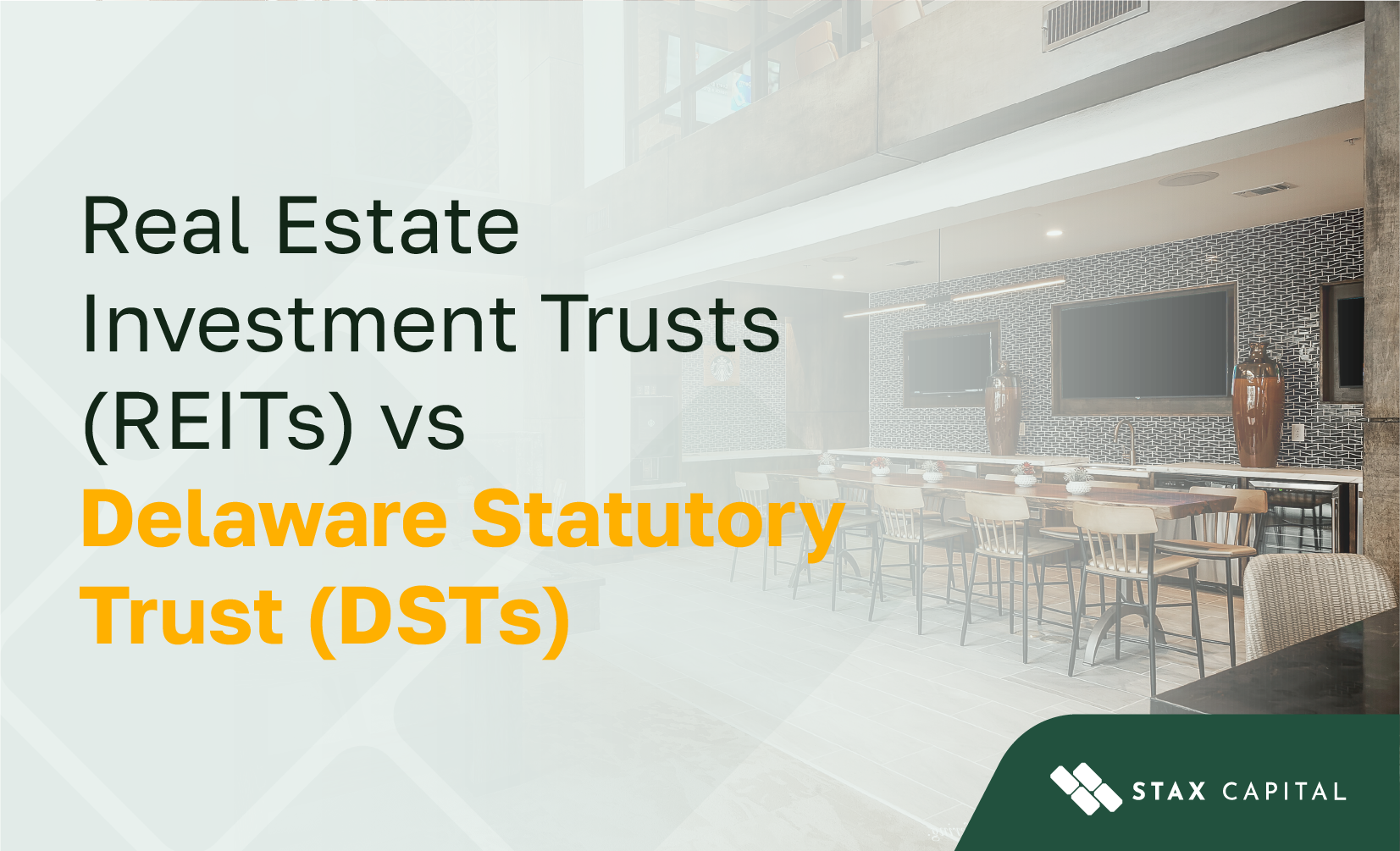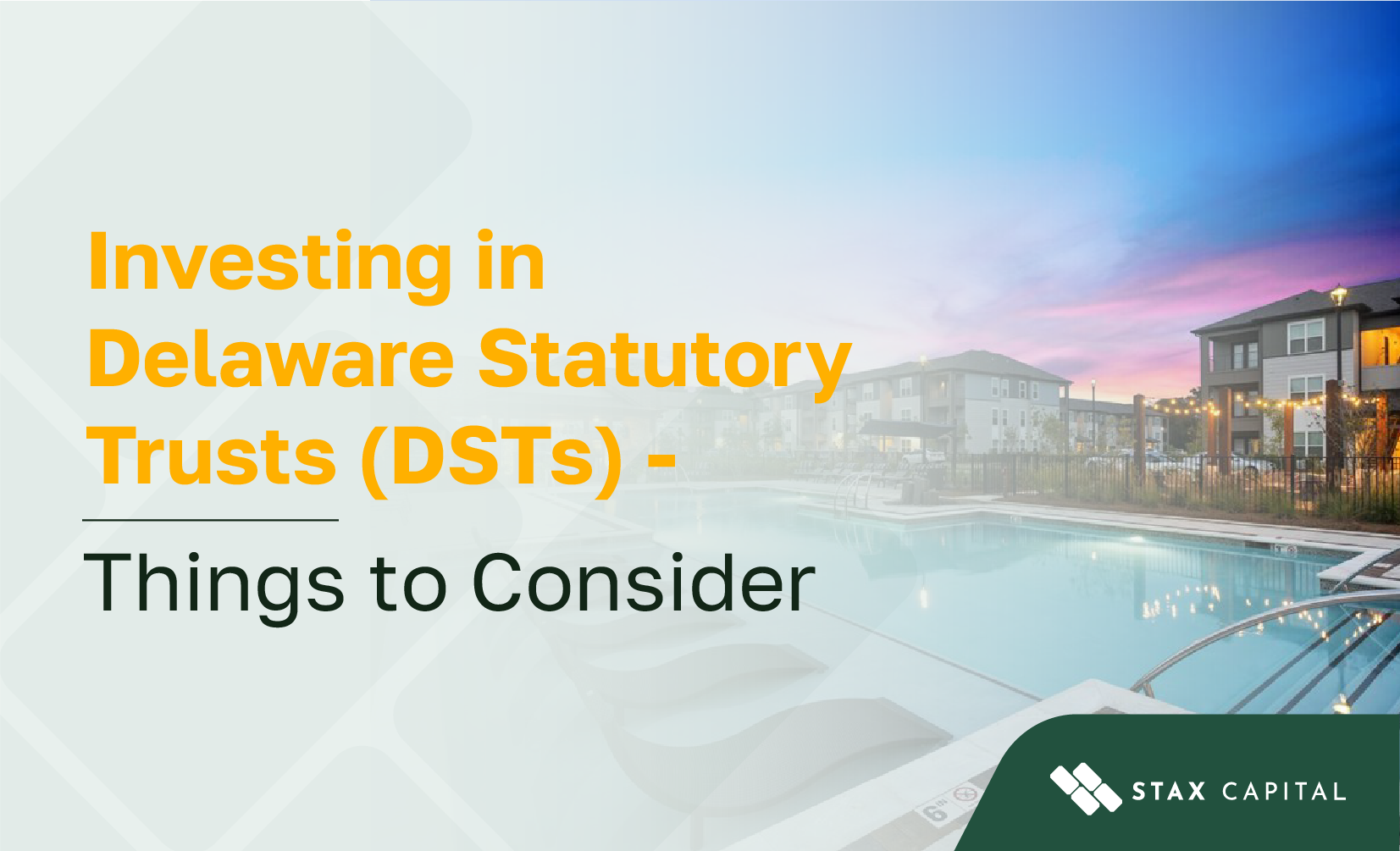The Hidden Risks of DST Investments: What Every Investor Should Know

Thinking about investing in a Delaware Statutory Trust (DST)? The idea of passive income and tax benefits can be appealing. However, DSTs come with their own risks. Illiquidity, no secondary market, and limited control are just a few challenges that might affect your financial plans.
This blog breaks down the hidden risks of DST 1031 Exchange investments and helps you make smart decisions to protect your portfolio.
The Hidden Risks of DST Investments
Illiquidity
One of the biggest drawbacks of investing in a DST is illiquidity. Once you commit your funds, getting them back isn’t as simple as selling a stock. 1031 DST properties don’t have a secondary market, meaning you can’t easily cash out if you need access to your money.
For investors who might need flexibility, this lack of liquidity can be a significant disadvantage. So it's essential to consider your financial situation and consult with an advisor before committing.
No Secondary Market
Investing in a DST exchange means committing your funds without a quick exit strategy, thanks to the lack of a secondary market. If circumstances change or you need cash, you’re out of options unless you find a willing buyer or until the property is sold by the trust.
This limitation can be challenging for those accustomed to more liquid investments like publicly traded securities. Before investing, think carefully about whether you can afford to have your money tied up for an extended period with no easy way out.
No Decision-Making Authority
DST investments are designed for hands-off investors, but the trade-off is a complete loss of control. When you invest, you’re trusting the trustee or sponsor to make all the decisions—from choosing tenants to deciding when to sell the property. While this might sound convenient, it can lead to frustration if you disagree with the trustee’s approach.
For example, if property upgrades or market timing differ from your strategy, you have no way to intervene. Be sure you’re comfortable with this structure before committing to a DST real estate investment.
Potential Tax Consequences
DST 1031 properties may defer capital gains taxes, but they don’t eliminate them. Depreciation recapture taxes are one of the first hurdles—these taxes apply to the deductions you’ve taken over time, often at a higher rate. Then there’s the risk of deferred capital gains taxes becoming due if a replacement property isn’t identified after the DST sells.
These potential liabilities can affect your investment returns and future planning. To stay ahead, it’s important to thoroughly understand the tax implications and work with an experienced advisor to minimize surprises.
Economic and Market Risks
Like any real estate investment, DST 1031 exchanges are subject to market fluctuations. Changes in interest rates, inflation, or economic downturns can impact the performance of DST investments.
For example, during an economic downturn, tenants might default or vacate, reducing cash flow. Similarly, inflation can drive up property management costs, cutting into profits.
While you can't eliminate these risks, carefully reviewing the DST's asset portfolio and understanding its resilience to economic changes can help you make a more informed investment decision.
Sponsor-Related Risks
Sponsor-related risks are an important factor to consider in DST investments. A sponsor is responsible for acquiring and managing the properties within the DST. If the sponsor lacks experience or has a poor track record, it could jeopardize the investment's performance. Problems like mismanagement, conflicts of interest, or financial instability can hurt your returns.
Before investing, check the sponsor’s credentials, past projects, and financial stability to ensure they have the necessary expertise. This can help reduce the risk and protect your investment
How to Mitigate These Risks
Diversify Investments
One of the most effective ways to reduce the risks in DST investments is by diversifying your portfolio. Instead of placing all your funds into one DST, spread your investments across multiple properties or asset types. This approach minimizes the impact of any single underperforming asset or sponsor.
Diversification balances returns and provides protection against market fluctuations. Even if one asset faces challenges, your overall portfolio is more likely to remain profitable. This strategy helps safeguard your investments while increasing potential long-term returns.
Evaluate the Sponsor
When investing in DST investment opportunities, one of the most important steps you can take to mitigate risks is evaluating the sponsor. A DST sponsor is responsible for the management, operations, and execution of the property. Research their history, how long they’ve been in the business, and the type of DST properties they’ve managed. Investigate whether they have a solid track record of successfully managing DSTs or if they’ve faced any legal or financial issues.
Understanding the sponsor’s experience, reputation, and commitment to transparency will give you more confidence in your investment and help you avoid unpleasant surprises down the road.
Review the DST Agreement
Before you invest in a DST, always review the DST or Master Lease agreement in detail. These documents serve as the blueprint for how your investment will be handled and what risks are involved. Make sure you understand the fee structure, the sponsor’s responsibilities, and any exit strategies in place.
A thorough review of this agreement helps you spot potential red flags and ensures you're fully aware of the risks and benefits. This gives you a clearer picture of your commitment and rights as an investor.
Understand Tax Implications
When you’re considering a DST investment, the tax implications can’t be overlooked. Depreciation recapture and capital gains taxes could significantly reduce your returns when selling the property. It's crucial to work with a tax professional to determine how these taxes may affect your returns.
By planning ahead, you can minimize the tax impact and ensure that your investment strategy aligns with your financial goals. A little knowledge about the tax impact can go a long way in maximizing your investment's returns and protecting your finances.
Consult Experts
Consulting with experts is one of the best ways to protect yourself from the risks of DST investments. Tax advisors, financial planners, and legal professionals can simplify the complexities of DST investments. They guide you through tax rules, legal requirements, and investment strategies tailored to your goals.
Their expertise helps you avoid costly mistakes and make smarter financial decisions. Consulting them ensures your investments align with your long-term objectives while minimizing risks.
Is DST Investing Right for You?
While DST investments provide an attractive option for diversifying your portfolio, they come with risks. It’s essential to weigh these risks against the potential rewards and ensure you’re prepared for the long-term commitment. By working with qualified professionals and thoroughly understanding the terms and implications, you can make informed decisions that align with your financial goals.
If you’re ready to take the next step or need guidance, we’re here to help. Get in touch with Stax today to learn more about how DST investments fit into your strategy!



Share: